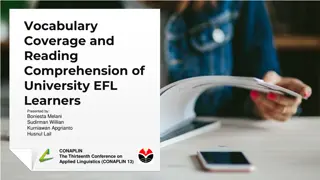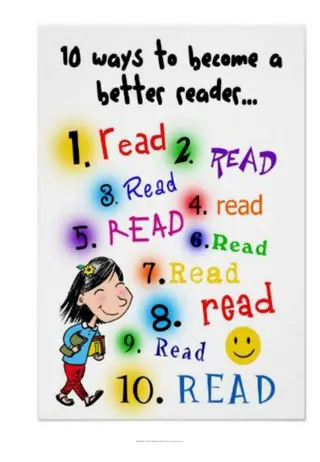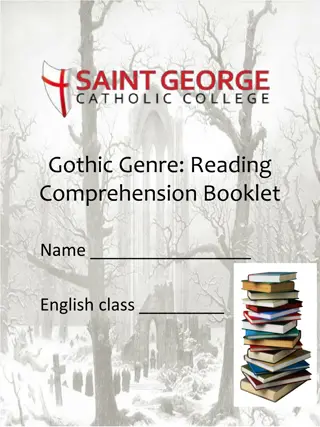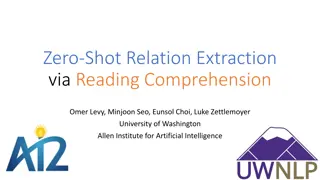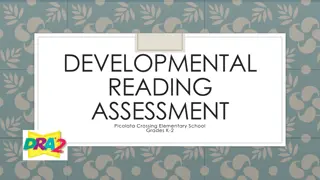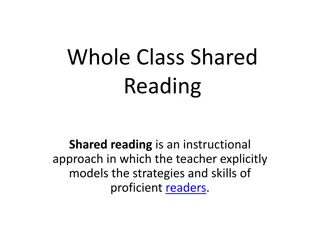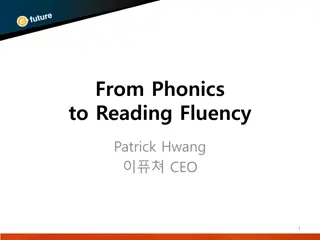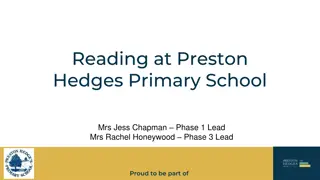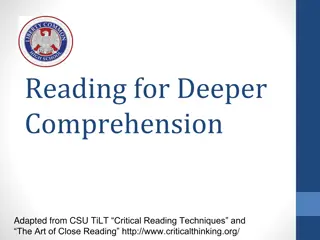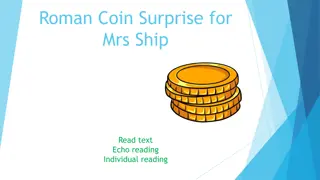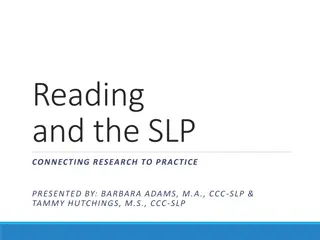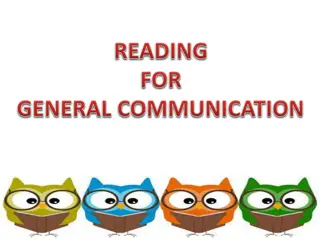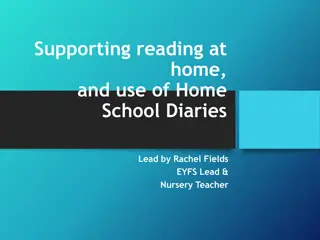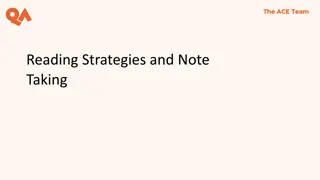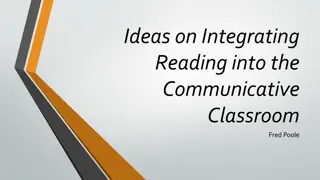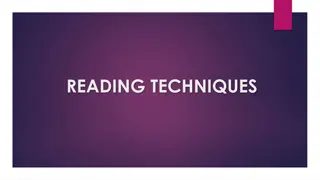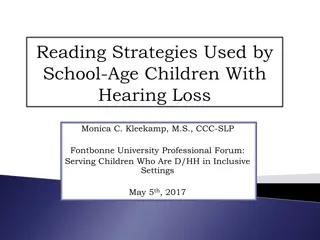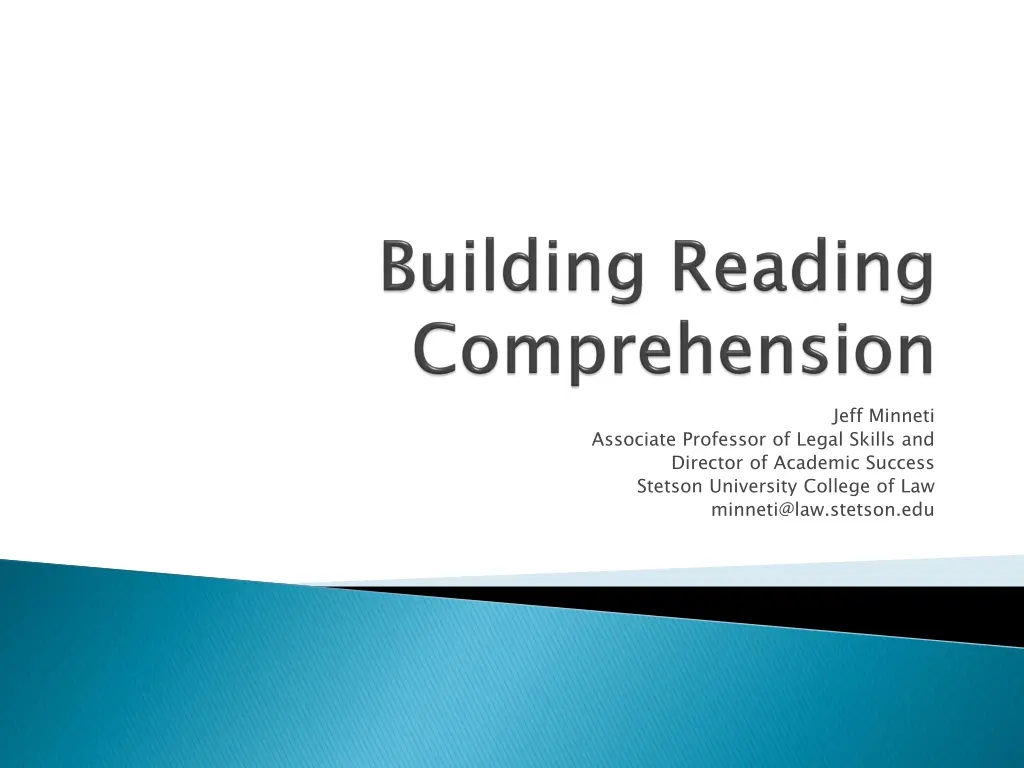
Mastering Reading Comprehension for Effective Learning
Enhance your vocabulary, understand the process of reading comprehension, and efficiently construct meaning from text with expert advice. Learn to engage actively with the text, employ rhetorical reading strategies, and problematize content to deepen your understanding and avoid common pitfalls. Join Associate Professor Jeff Minneti on a journey of improving your reading skills for academic success.
Download Presentation

Please find below an Image/Link to download the presentation.
The content on the website is provided AS IS for your information and personal use only. It may not be sold, licensed, or shared on other websites without obtaining consent from the author. If you encounter any issues during the download, it is possible that the publisher has removed the file from their server.
You are allowed to download the files provided on this website for personal or commercial use, subject to the condition that they are used lawfully. All files are the property of their respective owners.
The content on the website is provided AS IS for your information and personal use only. It may not be sold, licensed, or shared on other websites without obtaining consent from the author.
E N D
Presentation Transcript
Jeff Minneti Associate Professor of Legal Skills and Director of Academic Success Stetson University College of Law minneti@law.stetson.edu
Understand the process of reading comprehension Build reading comprehension Link reading comprehension to learning
Reading comprehension = constructing meaning from text Cascade of skills Skills cascade draws upon verbal working memory Cascade of skills Skills cascade draws upon verbal working memory
Increase vocabulary Latin phrases Mens rea Res ipsa loquitor Legal terms Promissory estoppel Per stirpes Efficiently construct meaning From word to sentence to paragraph to case or statute
Increase vocabulary Decode word Pronounce word Define word Link word to previously learned material Incorporate word into understanding of concept Rehearse word in context Write it Use it in conversation
Efficiently constructing meaning Requires that you actively engage the text Employ rhetorical reading strategies As you read, frequently step beyond the text Evaluate Synthesize Link meaning to purpose Appreciate the context Resolve confusion actively engage the text
Employ problematizing strategies Frequently question the text to set your expectations regarding the text s content Ask questions Talk back Make predictions Hypothesize
Avoid predominately relying on default reading strategies Highlighting or underlining Paraphrasing Margin notes Noting aspects of structure or specific detail Beware of Overreliance on background knowledge Potential mismatches
Blooms Taxonomy Learning Theory
Blooms Taxonomy Know Literal recall Regurgitation Comprehend Summarize Paraphrase Infer Draw conclusions Bloom s Taxonomy Apply to new situations Solve problems Analyze Identify patterns Make series of related inferences Synthesize Inductive thought (specific to general) Make predictions Relate knowledge from variety of areas Evaluate Make choices based on reasoned argument Compare and discriminate among ideas Assess value of theories, evidence Balance factors Identify logical fallacies
Learning Theory Cognitivism Information processing model Learning is link new information to previously learned information Linking bits of information together creates learning structures, called schemata. Schemata are most sturdy when Relationship between prior knowledge and new information is clear, precise, and detailed Such relationships arise when information is obtained from multiple sources Accessing information in schemata is recall; recall arises from memory trace Memory trace is strongest when Trace has multiple paths Trace familiar Seek to build automaticity with memory trace
Connecting Reading Comprehension and Cognitivism Engage in pre-reading Before you begin reading, access the schema you have on the topic by As you read, enhance the memory trace Employ rhetorical and problematizing strategies Transfer information into a new modality When you finish reading, reflect If there is material you do not understand, list your questions and make a plan for answering them
Learning Theory Constructivism Learning arises from the student s experience with the information, not from the instructor s dissemination of information Learning environment is optimal when it provides Authentic experiences Collaborative experiences Problem solving opportunities
Connecting Reading Comprehension to Constructivism Create authentic experiences Utilize rhetorical reading strategies Complete practice questions Collaborate with classmates
Understand the process of reading comprehension Build reading comprehension Link reading comprehension to learning
View Critically Reading Cases presentation Read and brief cases included on webpage Develop reading comprehension with legal and non-legal texts

